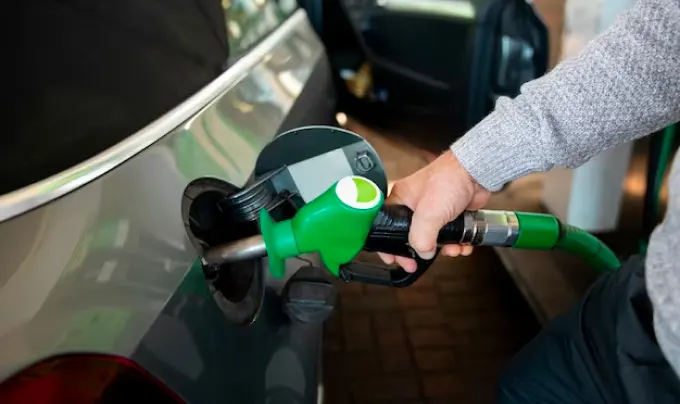

In the ever-evolving landscape of transportation, making the shift towards sustainable and eco-friendly options has become increasingly imperative. Gas-, hydrogen-, and electric-powered vehicles represent distinct solutions to the environmental challenges posed by traditional combustion engine vehicles.
Each technology comes with a unique set of advantages, thereby helping contribute to a cleaner, more sustainable future for us all. We’ll dive deeper into the benefits of each of these vehicles in the next section.
Gas-powered vehicles
Gas-powered vehicles, primarily fueled by gasoline, have been the conventional choice for decades. Despite facing criticism for the amount of carbon emissions they produce, gas-powered vehicles offer notable benefits.
For starters, gas-powered vehicles have a well-established infrastructure with an extensive network of gas stations, all of which ensure widespread accessibility for consumers the world over. Additionally, compared to alternative technologies, the production and maintenance costs of gas-powered vehicles are often lower.
However, the environmental drawbacks — such as greenhouse gas emissions and dependence on non-renewable resources — underscore the need for more sustainable options.
Hydrogen-powered vehicles
Hydrogen-powered vehicles represent a cutting-edge solution with the potential to revolutionize the automotive industry. These vehicles use hydrogen fuel cells to generate electricity.
Plus, hydrogen-powered vehicles emit only water vapor as a byproduct. One of the key advantages of hydrogen-powered vehicles is their quick refueling time; refuel time is comparable to that of traditional gas-powered cars.
Moreover, hydrogen can be produced using various renewable sources — such as wind or solar power — making hydrogen a potentially carbon-neutral fuel. As the infrastructure for hydrogen refueling continues to develop, these vehicles hold promise for a cleaner and more sustainable future.
Electric vehicles (EVs)
Electric vehicles (EVs) have gained significant traction in recent years, offering an eco-friendly alternative to traditional gasoline-powered cars. Running on electricity stored in batteries, EVs produce zero tailpipe emissions.
These vehicles contribute to improved air quality and reduced greenhouse gas emissions. The growing emphasis on renewable energy sources is yet another environmental benefit of EVs.
The expanding charging infrastructure and advancements in battery technology have helped address concerns related to limited range and charging times. For these reasons, electric vehicles may be a viable option for a broader range of consumers. The overall cost of ownership — including maintenance and fuel expenses — is often lower for electric vehicles, thereby contributing to their overall economic appeal.
A comparative analysis (EV, Gas, and Hydrogen)
Creating a greener future and transitioning to greener transportation is multifaceted.
When comparing electric vehicles versus gas- and hydrogen-powered vehicles, gas-powered vehicles offer familiarity and affordability, and hydrogen-powered vehicles provide a promising alternative for quick refueling.
Electric vehicles, on the other hand, stand out as a mature and increasingly accessible technology with a well-established charging infrastructure.
With all three vehicle types, challenges remain. For example, hydrogen-powered vehicles face production and distribution hurdles.
Plus, to realize the full environmental benefits of EVs, the electricity used to charge EVs must come from sustainable sources. Additionally, industry leaders and companies must better prioritize and address how manufacturing batteries impact our environment.
What lies on the road ahead?
The future of transportation lies in a diversified approach that combines the strengths of gas-, hydrogen-, and electric-powered vehicles. Ultimately, the benefits of each technology contribute to the collective goal of creating more sustainable and eco-friendly modes of transportation for generations to come.
Gas-powered vehicles can act as a bridge to new innovations, in that they provide consumers with familiarity and accessibility during the transition to more sustainable solutions. Meanwhile, hydrogen-powered vehicles offer a potential zero-emissions solution, which can be a real boon as the infrastructure to accommodate these vehicles continues to expand.
Electric vehicles — with their increasing popularity and advancements in technology — represent a cleaner and more sustainable option for the long term.
As we navigate towards a greener future, continued research, innovation, and infrastructure development will be crucial for our planet’s overall health. The synergy between these three technologies will pave the way for a transportation landscape that doesn’t only provide an efficient and accessible solution but also delivers one that’s, at its core, environmentally responsible and sustainable.
At GlobalMRV, we’ve collected and analyzed tens of thousands of hours of reliable data for clients of all different industries and niches. Our partnerships of Ph.D. researchers, managers, analysts, engineers, and technicians have run more than 60 different types of diagnostic testing regimes, supported over 100 different vehicles and engines, and saved companies millions on traditional dynamometer and real driving emissions (RDE) testing. To get started with your very own PEMS, contact us today.